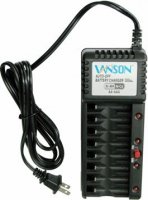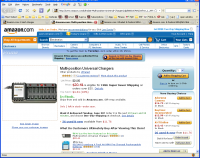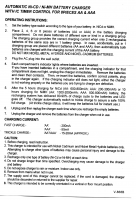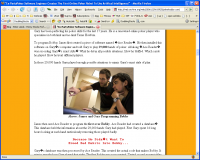How to Make Bread
Ok, forget what you know about making bread. Just forget it. Now read and do.
Reading this will take longer than it actually takes to make bread.
You’ll probably want to start with a single batch… just cut the recipe below in half to make 2 loaves… or quarter it for one loaf. The more bread you make in a sitting, the less cleanup there is. And refrigerated dough is easier to work with and tastes better because it ferments. But hey.
My four loaf recipe:
- 12 cups flour
- 6 cups water
- 4 tsp salt
- 4 tsp yeast
The types of flour, salt and yeast matter very little, young Skywalker. Really. Yes, really. Different ingredients make subtle differences but you’ll be so happy with how fricking easy it was to make this loaf, you can worry about that later. Try starting with All Purpose flour, Mortons salt and Instant Dry Yeast in a 1 lb bag.
Directions:
- Put it all in a big bowl and mix together with your hand for 60 seconds
- Let it rise for 45 minutes
- Make into loaves
- Bake
- Eat!
Really. Just mix together until it’s all wet. I use 1 hand in a big bowl because dough is terribly sticky. If you use a utensil, it’ll get stuck and gooped up (and you’ll have to wash it). If you use 2 hands, then both your hands will be covered with sticky goo!
Don’t knead it or roll it or anything. I’ve tried a couple ways of mixing the ingredients so they mix evenly. I mixed the water in with the yeast. Or poured the salt into the measuring cup or… or… forget all that! Here it is with a bit more detail, what I do and it comes out fantastic every time:
- Measure flour and pour into a big bowl (precision is not needed… I’ll scoop 1 1/2 cups one time and then 2 1/2 cups the next… it all pretty much averages out when you’re putting 12 cups into a bowl)
- Measure salt and toss onto the pile of flour
- Measure yeast and toss onto the pile of flour
- Measure water and pour onto the pile of flour. I usually reserve a little water just in case things are getting too wet… and then I almost always end up throwing it in after a few seconds of mixing.
- With one hand, stir and grab at the mix until it is an even, sticky gooey mess. Yes, the dough is probably much wetter and stickier than you were envisioning. Don’t remove it from the bowl, it’s too sticky!
- Cover it and let it rise for 45 minutes. If it grows to 1.5 it’s original size, you’re good to go.
You now have 4 loaves worth of bread dough. Put some portion (3/4?) of the mix into a plastic container and throw in the fridge for bread later in the week.
With the rest, make bread!
I put flour on my hands and the baking sheet to keep the dough from sticking.
- Grab a big hunk of dough and cloak it in your hands (see below) until it looks pretty.
- As the last cloaking move, make sure the bottom of the dough has flour on it so it doesn’t stick
- Set it on the cookie sheet and let it sit for 5-60 minutes.
- Put it in the cold oven
- Turn the oven to 425 and set the timer for 50 minutes
- When the timer beeps, remove from the oven, let cool and eat!
Here’s what I did this morning with the dough I had put in the fridge… Total work involved: 5 minutes. Total time from fridge to bread: 105 minutes
- Set out a cookie sheet

- Take the previously mixed dough out of the fridge
- Sprinkle the cookie sheet, the dough and my hands with flour (like 1/4 cup of flour)
- Grab 1/2 of the dough, pick it up quickly and set it down in the dough gently (if you toss it too roughly, the flour flies everywhere)
- Roll the dough in the flour until it isn’t all sticky, maybe 3 rotations.
- Cloak the dough, rolling in the dough in flour a couple times when it gets too sticky to handle (cloak: kneeding very briefly by holding the ball in both hands, pushing the middle up with fingers and the sides down with palms, rolling the lumpy bits to the bottom and putting a “cloak” of smooth pretty dough on the top of the loaf)
- Stretch the dough to the desired shapes… I made 1 long loaf and 1 round loaf this morning
- Put the cookie sheet and dough in the oven
 Let it sit just like that on the cookie sheet for 60 minutes so the dough rises (else the loaf will be pretty dense… maybe you want that though!)
Let it sit just like that on the cookie sheet for 60 minutes so the dough rises (else the loaf will be pretty dense… maybe you want that though!)- Turn the oven to 425 degrees and set the timer to 50 minutes.
- When the timer beeps, take your amazing fresh bread out of the oven and enjoy!
Cleanup for the first batch can take a few minutes. Sticky dough is a mess to clean up. The dough from the second batch, from the fridge is easier to handle. Cold dough isn’t nearly as blob-like.
I’ve been developing a feel for this for a while but I have to thank Charlotte’s gift to me of Artisan Bread in Five Minutes a Day: The Discovery That Revolutionizes Home Baking. It validates what I’ve been doing and gave me some excellent tips.
Sometimes I play with the temperature. I think it makes the crust thicker and heartier. But I could be wrong. Instead of 425 for 50 minutes from a cold oven, I do this:
- Put dough in oven and let sit for a while.
- Set timer for 18 minutes and oven to 550. (my oven gets to 550 in about 16 minutes).
- When the timer beeps, set the oven to 400 degrees and the timer to 22 minutes.
I’ve tried using steam and boiling water and spray bottles to get a better crust and I can’t tell the difference between a steamed loaf and a not-steamed loaf. So I don’t do it any more.
How much yeast to use: I have a recipe book that says stuff like “add 2 1/8 teaspoons yeast unless it’s Blahblah brand and then add 1 7/8 teaspoon”. Forget that. Yeast is flexible. It grows. It’s a bug that grows in your food and it farts a lot. The longer it’s in your dough, the more farting it’ll do, making your bread nice and fluffy. I haven’t ever gone wrong with 2 teaspoons or so of yeast for a batch. When I let it set for a while, I can use less yeast (hence, I use 3 tsp and not 4 in the recipe above) because it’s busy growing in my fridge. I should experiment more with varying yeast levels. Suffice to say that I can’t recall ever having too little yeast, though once when I added too much, the bread tasted a little funny.
Which bread flour to use: It doesn’t much matter. Really. Most recently I’ve been using Giusto’s Artisian Bread Flour in a 50 pound bag because… well, Restaurant Depot sells a 50 lb bag of the stuff for $18. I figured something that sounds like “Artisian Bread Flour” might be better than “All Purpose” for bread but… I haven’t noticed much differences between different flours. Recently I made some nice loaves out of whole grain and white spelt, they came out great. I’ve used mixes of cake flour and all purpose flour, they came out great. I’ve used mixes of whole wheat flour and all purpose flour, they came out great. I noticed that partial-whole-wheat bread has less crust and tastes different. I sometimes add wheat gluten but unless I add a lot, like 3 heaping tablespoons per cut, it doesn’t do anything. When I use that much, the finished bread is stiffer but I’ve gotten little tummy aches from such high concentrations.





